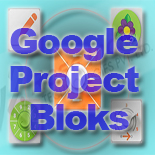Google Project Bloks, Breakthrough System to Make Kids Learn Coding
Children have the uncanny way of learning things through hands-on experience. Gradually we are trained to deal with abstract concepts and things but in our childhood seldom any complex concept bereft of material findings had been meaningful to us. What kids are fascinated with? Well, they are in most cased fascinated with the way things interact with each other and often logical or rational understanding of things in them start with these things around them. Scientists and educational researchers for a long time perceived this and always prescribed for hands-on experience in making kids learn quickly than dry concepts bereft of material support.
A long time academic researcher and educational scientist from Stanford University Learning Technologies Lab is one of these minds who prescribed tangible programming based on this idea of educating kids with manual experience. Recently, Google by joining hands with him came up with a new and breakthrough system of learning called Google Project Bloks to help kids learn to code quickly.
The theory behind Tangible Programming and Project Bloks
Project Bloks has its route in the core concept of tangible programming. Tangible programming is basically a computing concept that gives more importance solid hardware in learning how to code than the abstract concepts. It is based on the theory which says that kids learn quicker and in more result driven way through engaging themselves manually with both hands.

Basically, the system offers computing boards and some easy grid-like physical coding blocks that easily make kids learn how the rational and meaningful way of arranging them and connecting them can make the computer respond. It can literally help boosting the analytical and rational power to a great extent. Google understanding the huge scope of such systems in revolutionizing the learning process of kids ventured into the project open heartedly and we are looking forward to the time of the widespread adoption of such systems in kindergarten schools.
Components of Project Bloks
Project Bloks is made of 3 core components. They are respectively as the Brain Board, Base Boards, and Pucks. Brain Board works as the brain of the entire system. It holds the central processing unit and supplies power and connection to other parts. The Base Boards are basically modular boards that stay connected with the Brain Board. It is the component responsible for allowing the flow of information through the grid-like structure. Brain Boards mainly communicate via WiFi or Bluetooth and is only capable of connecting a device that has an API. The Base Boards work as the receiver of instructions sent via the sensors below the base of the connected pucks.
The Pucks are most essential components that work like physical codes to drive the boards with specific instructions. There is a wide array of Pucks as per the intended action and role. They can be just buttons or switches, dials, arrows or other signs. No electric power runs through them and so they are pretty affordable. Actually, their principal role is to carry a sensor at their base that transmits an instruction to the Base Boards.
Coding experience made physical for little learners
Google Project Bloks has one aim, that is to say, making kids learn the basic maneuvers and intricacies of coding through the easy grid-like physical system. The main success of the project actually depends on how the kids can develop their sense of reasoning and problem-solving skills. With the hardware taking an active part in letting them know he codes and respective actions through Pucks arrangement, the system seems robust enough to allow quick learning.
The huge challenge involved in incorporating the concept of tangible programming in the field of education is already well known. There are numerous obstacles including the huge gap between the demand and supply of input from educational institutions and infrastructure. In this context, the active participation and role of Google in the project can really transform the challenges into opportunities.
